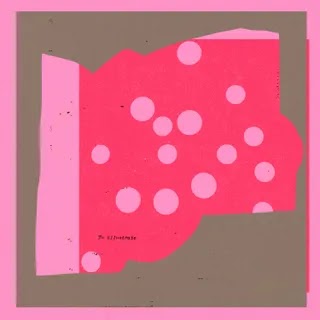With each track set around 100 BPM, this compilation from London’s Wisdom Teeth label allows the artists to stretch out and yield surprisingly dynamic results.
Most genres of dance music loosely correspond to specific tempo ranges. House thumps away at around 120 beats per minute; techno presses the accelerator to 130; drum’n’bass carves its tornado-like path anywhere between 160 and 180. These buckets are, in part, a practical consideration, facilitating the DJ’s beatmatching. But there’s also an expressive dimension to such divisions, and as the lines around subgenres have gradually dissolved, certain tempos have emerged as both organizing principles and creative playgrounds. When dubstep splintered in the late 2000s, some artists began singing the praises of 130 BPM as an umbrella covering bass music, UK funky, broken techno, and similarly rugged, syncopated, quick-stepping styles. Other DJs pledge fealty to 160 BPM as the sweet spot where drum’n’bass and footwork overlap. To Illustrate, a new collaborative album via Wisdom Teeth, turns its lens to the other end of the spectrum: 100 BPM, an ostensibly poky zone that yields surprisingly dynamic results.
London’s Wisdom Teeth got its start in 2014 as an outlet for a muscular strain of bass music that came along in dubstep’s wake; its early releases had a severe, spiky aesthetic similar to that of Bristol’s Livity Sound (with whom Wisdom Teeth occasionally shared personnel). But over time, co-founders Facta and K-LONE have opened up the label’s scope to encompass a more varied set of sounds rooted in ambient and home-listening electronica. No matter the tempo, a Wisdom Teeth release tends to be distinguished by its colorful palette and percussive, almost pointillist sensibility. That holds true for To Illustrate as well. The album’s 10 tracks are awash in lush synths and digitally rendered mallet instruments, while its drum sounds are as finely detailed as an intaglio print—a lattice of rimshots, woodblocks, cowbells, and dry, boxy snares. Metallic pings and laser zaps add a futuristic sheen, while tight spirals of dub delay lend a buoyant feeling, like air bubbles rising from a diver’s mouthpiece.
Ten or 15 years ago, a collection of tunes at this tempo might have been geared toward slow-motion disco or house—the sorts of shuffling four-to-the-floor beats that Theo Parrish used to turn out, followed by Kassem Mosse and the Workshop crew. These days, reggaeton’s patterns are the primary point of reference, and they animate almost every track on the comp. Miami producer Nick León’s “Separation Anxiety” is a stern, lurching club banger driven by staggered kicks, staccato accents, and bear-trap snares. Manchester producer Henzo’s “Whirlpool Vanish” has a similarly minimalist sensibility; its buzzing synth bass and herky-jerky movements recall the resolutely digital style of dancehall favored around the turn of the millennium by producers like Sly Dunbar, Lenky Marsden, and Ward 21, and subsequently anthologized on the Mo Wax compilation Now Thing. But even the dreamier, more laid-back cuts, like Facta & K-LONE’s R&B-leaning “Kiss Me, Can’t Sleep” or Bristol duo Glances’ cosmically inclined “Sun Dapple,” tend to follow dembow’s syncopated pulse. That DJ Python—whose Worldwide Unlimited label counts Henzo among its roster—is nowhere to be found here only serves to show just how influential the New York producer’s idea of “deep reggaeton” has been.
While most of To Illustrate’s artists hail from the UK, Facta and K-LONE also look further afield for like-minded souls. Nagoya’s abentis, whose previous work has been influenced by the log-drum sound of South African amapiano, arrays verdant marimba patterns and steady woodpecker taps into fanciful forest music; the Seoul duo Salamanda extend the style they developed on their 2022 album for Mexico City/New York label Human Pitch into a rich, subaquatic funk in which spring-loaded syncopations unleash the kind of energy you might expect from a tightly wound drum’n’bass tune. If the compilation’s title is meant to suggest didactic aims, one lesson is just how much nuance can be wrung from this tempo. With more room between downbeats, there’s more space to stretch out; time becomes elastic, and synths and drums alike can be bent into svelte little curlicues. To Illustrate also proves how easily even the most unassuming idea—like, say, “Let’s slow things down”—can travel around the world, taking root in unexpected ways.



0 comments:
Post a Comment